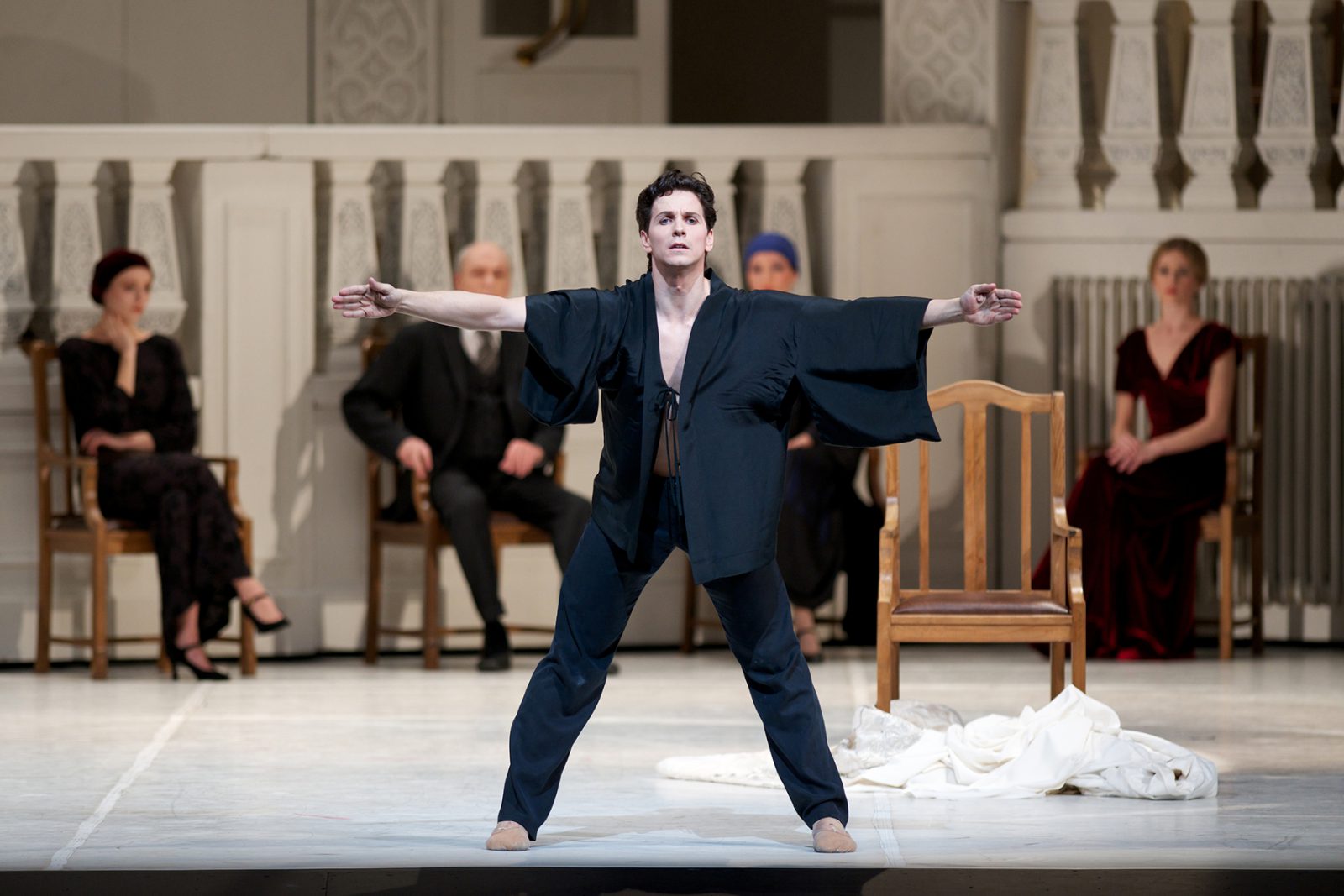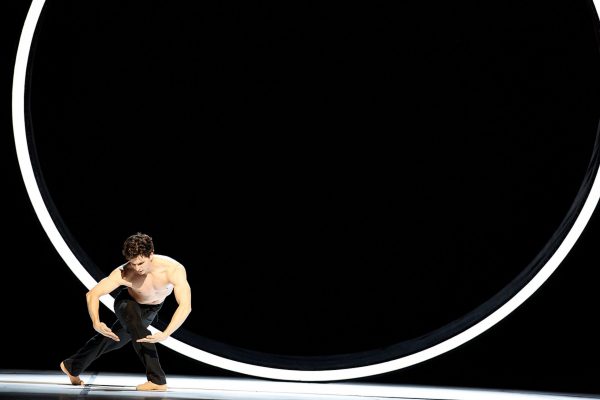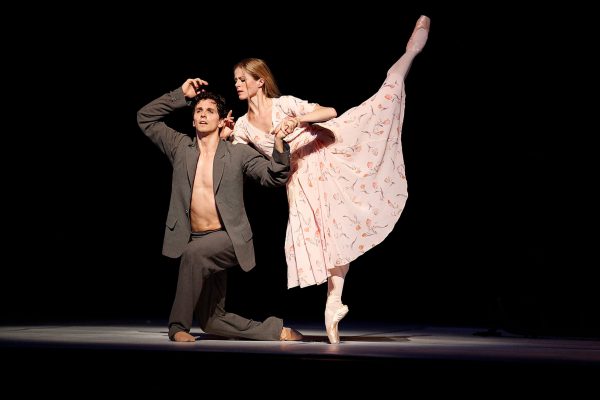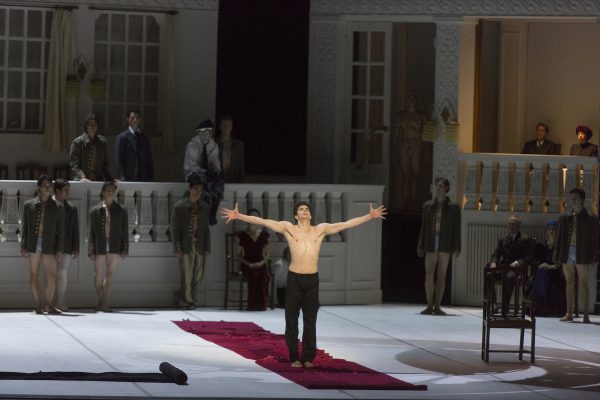The National Ballet of Canada’s Nijinsky is an emotional, enthralling and technically brilliant work in two acts. On opening night, National Ballet of Canada veteran Guillaume Côté reprised his role as the titular Nijinsky, combining raw emotion with technical excellence. He commands the stage whenever he is on it, even with a brightly costumed corps de ballet surrounding him.
Nijinsky tells the story of the famous dancer’s life through the lens of his “madness,” the schizophrenia that Nijinsky suffered later in his life. This madness is woven into every aspect of the ballet. Much of John Neumeier’s stunning choreography strays from classical ballet vocabulary, with the dancers demonstrating a sharper, more angular movement quality. When in the depths of the madness, the choreography is particularly sharp, quick and rhythmic, emphasizing the discordant notes in the music. In the second act, the dancers even vocalize their madness in hysterical, over-the-top laughter. Ballet audiences are unaccustomed to such vocalization in performances, and while surprising, at the same time it causes the viewer to become more fully immersed in the emotions of the performance. Nijinsky sees the world around him as going mad, and the audience experiences that alongside him.
Where the madness most manifests itself in the performance is through the structure of the ballet itself. Rather than being a linear, literal narrative, the ballet twists and turns as Nijinsky relives memories. His iconic roles, such as the Harlequin in Carnaval, are played out onstage by other dancers. They serve as physical representations of his schizophrenia, as he and his family and lovers encounter and interact with his former selves, while at the same time they separate from Nijinsky himself. Each of his early roles is played to perfection, as each dancer embodies unique and distinctive physical and emotional characteristics of these manifestations. The standout performances of the night were Keiichi Hirano as the Golden Slave and Jonathan Renna as Petrushka, with both dancers not only fully transforming into the characters, but articulating what they represented within Nijinsky’s state of madness.
One of the most captivating aspects of Nijinsky is the relationship between Nijinsky and his mentor and lover, Serge Diaghilev. Diaghilev, played by Evan McKie, is a powerful, stoic and intimidating figure from his first appearance. Côté portrays Nijinsky as consistently drawn to Diaghilev, seeking his attention and unable to turn away. Their relationship demonstrates an exploration of queer sexuality, which is so often neglected on the classical ballet stage. The choreography between the pair features various movement motifs that illustrate the power dynamics between the two men. Nijinsky wraps his arms around the other man, is carried by him in a “bridal” hold, leans on his back, shadows him. This relationship is juxtaposed with the relationship between Nijinsky and his wife, Romola (Xiao Nan Yu), which in the past was playful, but in Nijinsky’s present is strained because of his madness. She spends a great deal of time dancing with his characters, as if she is pulled to the memories of Nijinsky, while he remains inexplicably drawn to Diaghilev. The push and pull of these relationships is entrancing and performed to perfection by all three artists. The audience is left questioning who was truly in love and where their loyalties lie.
Original, memorable and captivating, Nijinsky is a ballet that is not to be missed.~
The Emerging Dance Critics Programme is a partnership with The National Ballet of Canada, grounded in The Dance Current’s educational mandate. Reading Writing Dancing is one of The Dance Current’s educational programs, providing workshops, seminars, mentorship and professional development to emerging and established dance writers alike. As part of our commitment to the field, we partner with like-minded organizations, such as The National Ballet of Canada, to educate dance readers and dance writers, providing public access to dance art and culture, and facilitating dance literacy and appreciation.
Tagged: Ballet, Choreography, Emerging Arts Critics Programme, Guillaume Côté, Performance, ON , Toronto





